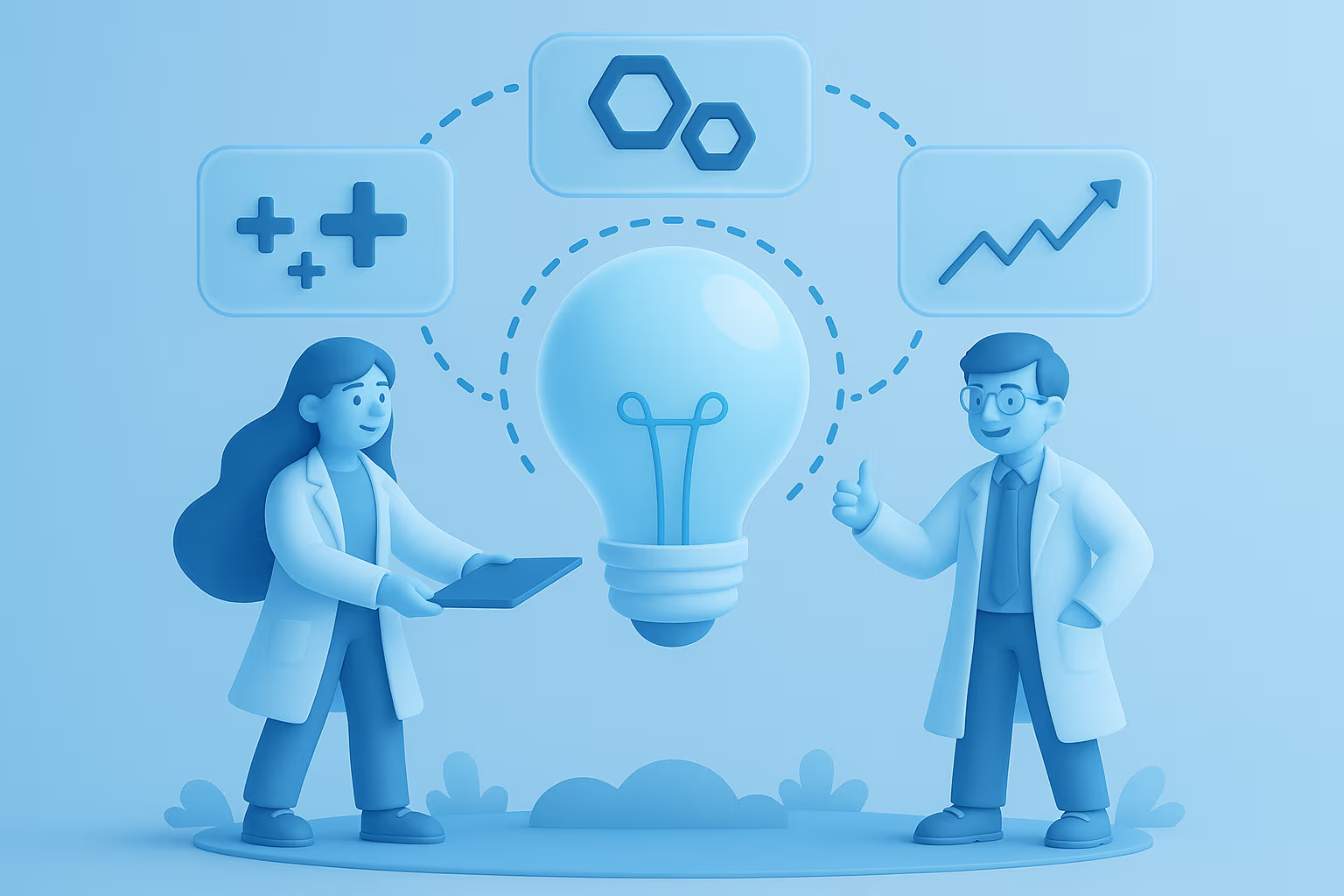The Idea Is Easy: Validation Is Not
Most startups don’t fail because they lack vision.
They fail because they fall in love with untested assumptions.
Every founder begins with a hypothesis about a market, a need, or a behavior that seems obvious at first. But what feels like truth in abrainstorming room often collapses in the real world. Studies show that 42% of startups fail because they misread market demand, while another 17% collapsebecause their products don’t solve a real problem.
These numbers aren’t just statistics; they’re signals. They reveal that the difference between the startups that survive and those that don’t often comes down to one thing the ability to turn assumptions intovalidated insights.
That’s where modern market research steps in. Not as a post-launch diagnostic, but as the core intelligence layer that turns a startup’s hunch into a tested hypothesis and a sustainable strategy.
The Hypothesis Trap: When Conviction Outruns Evidence
Founders are wired for conviction, it’s what keeps thembuilding when others quit. But conviction without validation is a recipe forexpensive lessons.
Here’s how the trap unfolds:
- A founder identifies a perceived “gap” in the market.
- They sketch an MVP and show it to friends (who nod politely).
- Early interest is mistaken for demand.
- Investment follows before research does.
Within months, the startup has burned capital by chasing a problem that doesn’t exist or solving it for the wrong people.
The lesson? Startups fail not from lack of effort, but fromlack of insight.
Every idea begins as a hypothesis, and hypotheses are meant to be tested. Yet many founders validate emotionally rather than empirically.Market research exists to reverse that order to test before you scale, to learnbefore you spend, and to listen before you launch.

From Guesswork to Groundwork: Building the Learning Loop
The most resilient startups don’t just build products they build learning systems.
Hypothesis → Test → Insight → Iterate
A structuredapproach that connects curiosity with evidence.
- At the hypothesis stage, founders define what they believe about their users.
- During testing, research tools surveys, qualitative interviews, or digital ethnography collect real-world reactions.
- Those signals are translated into insight, clarifying what works, what doesn’t, and why.
- The startup then iterates, armed with clarity instead of hope.
This loop transforms research from a reactive task into astrategic operating system.
The faster a startup learns, the longer it lives.
In this model, research doesn’t slow you down, it saves you from racing in the wrong direction.
Turning Research into a Startup Superpower
Research is no longer a luxury for large corporations it’s the secret weapon of agile startups.
When used correctly, it drives confidence at every stage of growth.
1. Idea Stage:
Use trend analysis, audience exploration,and social listening to uncover unmet needs. Market data reveals what’s changing not just what’s already known.
2. Prototype Stage:
Concept tests and quick-turn surveys helprefine your core value proposition. Which features matter most? What languagedoes it resonate? What signals trust?
3. Launch Stage:
Behavioral analytics track how users interact, revealing gaps between what people say and what they do.
4. Scale Stage:
Brand tracking, sentiment analysis, and loyalty research inform your long-term strategy, helping you build not justawareness, but advocacy.
Across all these stages, research isn’t just about datacollection.
It’s about pattern recognition spotting the small signals that predict bigoutcomes.
The Role of Modern Tools: AI, Data, and Decision Intelligence
In 2025, the speed of insight has become as critical as theinsight itself.
New technologies are reshaping how research deliversclarity:
- Predictive Analytics: Uses historical and behavioral data to model outcomes before they happen like identifying customer churn or demand surges.
- Synthetic Data: Generates statistically representative samples while protecting user privacy. Startups can test ideas without needing thousands of respondents.
- AI-Driven Text Analytics: Decodes thousands of open-ended responses, extracting emotional tone, themes, and behavioral intent.
- Automation Tools: Streamline survey design and analysis, letting founders test multiple hypotheses simultaneously.
These aren’t just technological add-ons they’re multipliersof human intelligence.
Common Startup Research Mistakes and How to Avoid Them
Even well-intentioned founders stumble when they approachresearch as a box to tick rather than a strategy to design. Here are the mostcommon pitfalls:
- Mistaking feedback for validation.
Getting positive comments doesn’t mean product-market fit it means you’ve asked the wrong questions. - Collecting data without applying it.
Insight unused is insight wasted. Data must drive decisions, not decorate decks. - Over-indexing on numbers, ignoring narrative.
Metrics tell what happens. Stories tell why. True insight needs both. - Rushing to scale before learning.
In research, speed without strategy equals noise.
Startups thrive when they see research not as a one-timeactivity, but as a living, learning process.
Why Human Oversight Still Matters
Technology can process information, but only humans can interpret it in context. Insight requires empathy, a sense of what truly drives decisions.
Our hybrid model ensures that every machine-derived finding is reviewed, validated, and contextualized by human analysts who understand behavior beyond metrics.

The BioBrain Way: From Hypothesis to Clarity
At BioBrain, we’ve seen what happens when founders replace guesswork with guided intelligence.
We help startups move from Do-It-Yourself research fragmented tools, manual analysis, slow results
to Do-It-For-You intelligence, where data, design, and decision-making live in one continuous flow.
What sets BioBrain apart:
- End-to-End Managed Insights: We handle everything from research design to actionable storytelling.
- Human + AI Synergy: AI accelerates pattern recognition; human experts translate data into business language.
- Decision-First Outputs: Insights are delivered as strategic recommendations, not raw reports.
- Speed Without Compromise: Rapid turnaround, zero shortcuts on rigor.
This is what we call research that thinks with you wherestartups don’t just collect data, they collect direction.
The Future Belongs to the Insight Ready
The next wave of successful startups will not be defined by funding, but by foresight. Markets are changing faster than intuition can keep up. Startups that build insight into their DNA will outlearn, out adapt, and outlast those that rely on instinct alone.
“Startups don’t fail because they run out of money they fail because they run out of insight.”
Research is not the cost of innovation; it’s theinfrastructure of survival.
When data, design, and decision-making align, startups move beyond reactivegrowth to predictive resilience.
BioBrain exists to make that clarity accessible.
We transform complex research into confident action turning your nexthypothesis into your next growth story.











